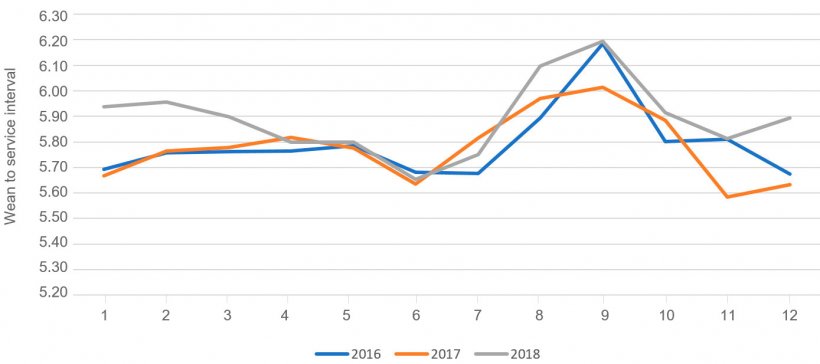Heat stress can have significant financial impact for producers, with the cost in the US pig industry alone estimated at $300 million. Here we look at the causes and effects, as well as a range of solutions to help minimize the impact on herd performance.
Increasing temperatures, increasing problems

From the time of the industrial revolution until today, global temperatures have increased 1.5°C, yet recent predictions from the IPCC (Intergovernmental Panel on Climate Change) are expecting to see a similar increase in the next forty years. They also predict that it is very likely that heat waves will be more intense, more frequent and longer lasting in a future warmer climate. Almost everywhere, daily minimum temperatures are projected to increase faster than daily maximum temperatures, leading to a decrease in diurnal temperature range.
In the last decade, there has been important expansion in pig production in typically hot climate areas such as Spain, South America and Southern Asia.
Decades of selection for leaner carcasses have produced pigs with an increased thermal sensitivity. The reduction of feed intake in conditions of heat stress is an attempt to decrease metabolic heat production. A meta-analysis of publications in the period 1970-2009 revealed the effect of heat stress on feed intake to be more pronounced in recent years, thus demonstrating the effect of genetic progress.
What is the impact of heat stress on sows?
The effects of heat stress in sows include increased higher rectal temperatures in sows post-partum, higher respiration rates and prolonged farrowings, all leading to a poorer sow welfare. The effect in the first five days post insemination has been shown to significantly reduce the number of viable embryos present at day 27.
Prenatal stress from high ambient temperatures may increase the risk of intrauterine growth retardation. Piglets born from heat stressed sows have been shown to demonstrate the epigenetic effect of developing higher levels of back fat in the grower phase.
The most commonly observed effects of heat stress in lactating sows are reduced feed intake with consequential lowered milking performance resulting in higher pre-weaning mortality (Figure 1) and reduced piglet weaning weights. This may also be accompanied by an increase in weaning to service interval (Figure 2).


Modern hyper prolific sows can be in a severe catabolic state and undergo increased oxidative damage in late gestation and lactation. In conditions of high oxidative stress there will be reduced reproductive performance in terms of lactating capability and subsequential weaning to service interval.
Novel feeds can have an impact on heat stress
A recent study by the author looked at the effect of a feed supplement on the lactation diets. Two groups of sows balanced for parity and body weight were fed a standard farrowing ration with/without the addition of 3kg/ton of a commercial product based on agents known to help with vasodilatation as well as calcium and potassium homeostasis, thus reducing heat production. The temperatures in the farrowing house ranged from a minimum of 24.7 to a maximum of 34.6°C with an average of 27.9°C. Piglets from seven litters from each, the control and treatment group, were all individually weighed .Litters from the treated sows showed a significantly (p<0.001) better daily live weight gain (0.210 gr vs 0.189) .
Other nutritional and management solutions to combat heat stress
Other factors to consider during the hot period are the use of a specialized “summer lactating diet”. Considering that feed intake will be reduced reduction may vary from 10 to 25%), then all of the nutrients must be concentrated. Typically vitamin and mineral inclusion levels are based on a feed intake of 6 to 8 kg/sow/day, therefore they must be scaled up accordingly. A higher level of fat in the diet will concentrate the energy source.

Digestion of fibre creates heat, so a summer lactating diet will have a lower than normal level of fibre. The source of fibre is also important. Fermentable fibres should be replaced with non-soluble sources.
The pre-summer period is a good time to sanitize all the drinking lines and prevent any build up of bio film which will actively multiply in hot conditions. At the same time, check the flow rates on all the farrowing crate drinkers, and ensure that there is equal delivery rates at the first and last drinker in the line.
This is the time to control, clean and change, if need be, the cardboard panels in the evaporative cooling panels. They tend to lose efficiency over time to due the calcium build up with ”hard” water, and the build up of dust, pollen etc. Recent work in the USA has shown more effective sow cooling to be provided by cooler panels placed underfloor, directly below the forward part of the farrowing crates.
You may also consider, using a “summer time” working hours schedule, which would allow feeding times to be adjusted to the cooler hours of the day.
Making these changes now can have an impact on this and subsequent years reproductive and financial performance on farm. Can you afford not to act?





